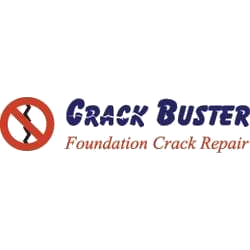IMPORTANCE OF FLEXIBILITY
Despite their solid and immovable appearance, foundations undergo incremental movements. Changes in the weather can cause varying degrees of expansion and contraction of the soil surrounding the foundation. Variations in rainfall influence the movement of groundwater around the footing. Even differences in the house above the foundation can affect it in minor ways.
A properly designed and constructed foundation can withstand the stress of minor movements. If the stress exceeds the tolerance of the foundation material, however, cracks develop to relieve the stress. The formation of a crack establishes a kind of flexible joint, but this flexibility comes with a potential problem—water seepage. Obviously, water seepage needs to be stopped. If the original condition is re-established by simply plugging the crack with concrete, subsequent movement of the foundation can lead to reopening of the same crack or the creation of new cracks to relieve the stress.
Predictable ongoing changes in temperature and humidity as well as settling of the ground supporting the footing will always stress the foundation to some degree and it will respond by moving (forming cracks) to relieve the stress. Any alteration of the foundation (repairing cracks) must make allowance for such movement. The solution is to create a seal over the crack that is both waterproof and flexible. The ideal seal acts as a control joint, accommodating both expansion and shrinkage of the crack. Crack Buster has a product that does precisely this—successfully seals foundation cracks permanently.

There are no comments